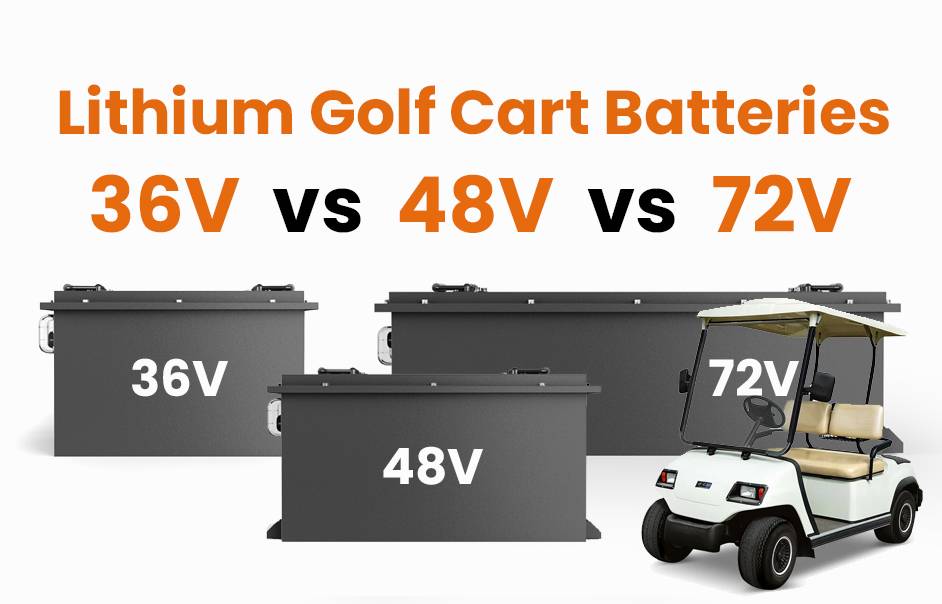
Blog
Why Choose LiFePO4 Batteries for Your Golf Cart?
LiFePO4 (lithium iron phosphate) batteries offer superior performance, longevity, and cost-efficiency for golf carts compared to traditional lead-acid batteries. They provide longer runtime, faster charging, and require minimal maintenance. With a lifespan of up to 10 years, these eco-friendly batteries reduce long-term costs and environmental impact, making them the optimal choice for modern golf cart power solutions.
What Makes LiFePO4 Batteries Ideal for Golf Carts?
LiFePO4 batteries excel in golf carts due to their high energy density, lightweight design, and stable chemistry. They deliver consistent power output, even under heavy loads, and operate efficiently in diverse temperatures. Unlike lead-acid batteries, they do not suffer from sulfation, ensuring reliable performance over thousands of charge cycles without capacity loss.
How Do LiFePO4 Batteries Compare to Lead-Acid Alternatives?
LiFePO4 batteries outperform lead-acid in lifespan (3–5x longer), charge speed (50% faster), and depth of discharge (80–100% vs. 50%). They weigh 50–70% less, reducing cart strain and improving efficiency. While upfront costs are higher, their lower maintenance and replacement frequency result in 30–50% long-term savings, making them a cost-effective upgrade.
When evaluating total ownership costs, LiFePO4 batteries often break even within 2-3 years due to reduced energy consumption and elimination of watering/equalization labor. Their ability to maintain 90% capacity after 2,000 cycles versus lead-acid’s 300-500 cycles makes them ideal for high-usage scenarios like golf courses or resorts. A typical 48V LiFePO4 pack provides 120-150Ah capacity while occupying 30% less space, allowing for creative battery compartment redesigns or additional storage.
| Feature | LiFePO4 | Lead-Acid |
|---|---|---|
| Cycle Life | 2,000+ | 300-500 |
| Charge Time | 2-4 hours | 8-10 hours |
| Weight (48V System) | 60-80 lbs | 150-200 lbs |
What Are the Installation Requirements for LiFePO4 Golf Cart Batteries?
Installation requires a compatible voltage system (typically 48V or 72V), a lithium-specific charger, and proper battery tray modifications due to smaller size. Wiring must match the BMS (Battery Management System) specifications to prevent overheating. Professional installation is recommended to ensure optimal alignment with the cart’s motor controller and safety protocols.
How to Maintain LiFePO4 Batteries for Maximum Lifespan?
LiFePO4 batteries need minimal maintenance: avoid full discharges (keep above 20% charge), store in cool/dry conditions, and use a quality charger with balanced charging. Regularly check terminals for corrosion and ensure firmware updates for integrated BMS. No water refilling or equalization cycles are required, unlike lead-acid variants.
Why Are LiFePO4 Batteries More Environmentally Friendly?
LiFePO4 batteries contain no toxic lead or acid, reducing hazardous waste. Their 10-year lifespan minimizes landfill contributions, and 95% of components are recyclable. Efficient energy use lowers carbon footprint, aligning with green energy trends. Production also consumes fewer resources compared to lead-acid manufacturing processes.
Can LiFePO4 Batteries Withstand Extreme Weather Conditions?
Yes. LiFePO4 batteries operate efficiently in -20°C to 60°C ranges, unlike lead-acid, which struggles below 0°C. Built-in BMS protects against temperature extremes by regulating charge/discharge rates. Thermal stability prevents overheating, making them ideal for both summer golfing and winter storage without performance degradation.
The battery management system actively monitors cell temperatures using thermal sensors, automatically reducing charging current when temperatures exceed 45°C. This prevents the accelerated degradation seen in lead-acid batteries during heatwaves. In freezing conditions, the BMS employs gentle pre-heating cycles using residual power before allowing full discharge capability. Golf courses in Arizona and Minnesota alike report consistent performance year-round, with less than 5% capacity fluctuation between seasons.
“LiFePO4 technology is revolutionizing the golf cart industry. Its combination of safety, longevity, and efficiency addresses the core limitations of lead-acid batteries. Golf courses adopting LiFePO4 report 40% fewer replacements and 25% energy cost savings, proving its viability as a sustainable upgrade.” — John Carter, Energy Solutions Director at EcoPower Innovations
Conclusion
LiFePO4 batteries are the future of golf cart power, offering unmatched durability, efficiency, and eco-friendliness. By investing in this technology, users gain long-term savings, reduced environmental impact, and hassle-free performance, solidifying their status as the superior choice over outdated lead-acid systems.
FAQs
- Q: Can I retrofit LiFePO4 batteries into an older golf cart model?
- A: Yes, most models can be retrofitted with adapter kits, but consult a technician to ensure compatibility with the motor and controller.
- Q: Do LiFePO4 batteries require a special charger?
- A: Yes, use a lithium-specific charger to avoid overcharging and ensure BMS synchronization for optimal safety.
- Q: Are LiFePO4 batteries safe in case of a crash?
- A: Their stable chemistry minimizes fire risk, and rugged casings protect against impact, making them safer than lead-acid in accidents.




